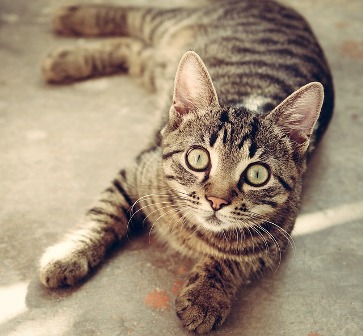Why Do Cats Stare?
Why Do Cats Stare?
How many times have we found ourselves noticing our cat sitting motionlessly and staring at empty space or the opposite wall? What is the cat looking at? What can it see, and we cannot? There is no scientific explanation for this strange behavior, and we can only speculate. What we know about cats are their senses and their much larger capability than ours. They do not have internet, television, computers, and gadgets. Their senses are not overly congested with much unnecessary information. On the contrary, they can see, hear, feel, and smell much better than we can. Their senses are their most reliable resources, crucial for survival. And what cats stare at is not empty space; it can be rather their senses in the working mode. Maybe the cat is listening to some distant sound, we are completely unaware of it. Or, maybe its eyes see something, we cannot, because cat’s eyesight compared with humans’ is much more different and at times better. The article “What Is Your Cat Saying? Reading Your Cat’s Body Language” describes the changes of the cat’s eyes that follow different types of gazing.
Why Do Cats Stare?
Look into your cat’s eyes and you can tell a lot about his state of mind. The direction of your cat’s gaze will direct you to the subject of his attention. But gazes vary. Some are intense and focused while others are haphazard. When your cat stares without blinking, does he want something from you or is he feeling hostility? Either could be true. Although a fixed gaze and rigid body posture might mean hostility, the same look might be soliciting petting or some other form of attention in a relaxed, purring cat.
Another fairly definite eye sign relates to pupil size. If your cat’s pupils are constricted and slit-like, his mood is probably ambient, bordering on vegetative. Or perhaps it’s predatory. However, if your cat’s pupils become fully dilated in broad daylight, appearing as large black pools, he’s either in pain or ready to fight or run away. Increased pupil size is not intended to intimidate other cats or people but rather to allow more light into the eyes. Cats’ pupils are always large at night but veterinarians learn very quickly to beware when a cat’s pupils are fully dilated in a brightly lit examination room.
The degree of opening of the eyelids can tell a tale, too. Wide-open eyes correlate with alertness and increased levels of mental activity – ready for action, if you will. Semi-closed or fluttering eyes mean that the cat is in a more dozy, complacent mood or may be in the mood for a nap. So if your cat’s eyelids flutter and periodically close while he is looking at you, it is a sign of faith or trust. Even if he is on the brink of falling asleep at the time, squinting at you is still a compliment because your pet is showing that he is comfortable and trusting enough to take a nap in your presence.
Apart from the basic senses, we could not have to forget the cat’s whiskers as the one of its unique senses. Whiskers help them to collect information from the outside world and feel the changes in air flow. Thus, if we think that our cat simply stares at nothing, it can be just the opposite. The cat simply does her job – study its environment. If we think a little deeper, this cat’s trait is not coincidence. Cats are the great hunters, known as very committed, persistent, and patient. As patient hunters, they can stare at their prey for too long. Their strongly focused gaze is one of the cats’ greatest skills. So, when next time the cat stares at the empty space, maybe it only tries to stay in shape and practice its skills.










